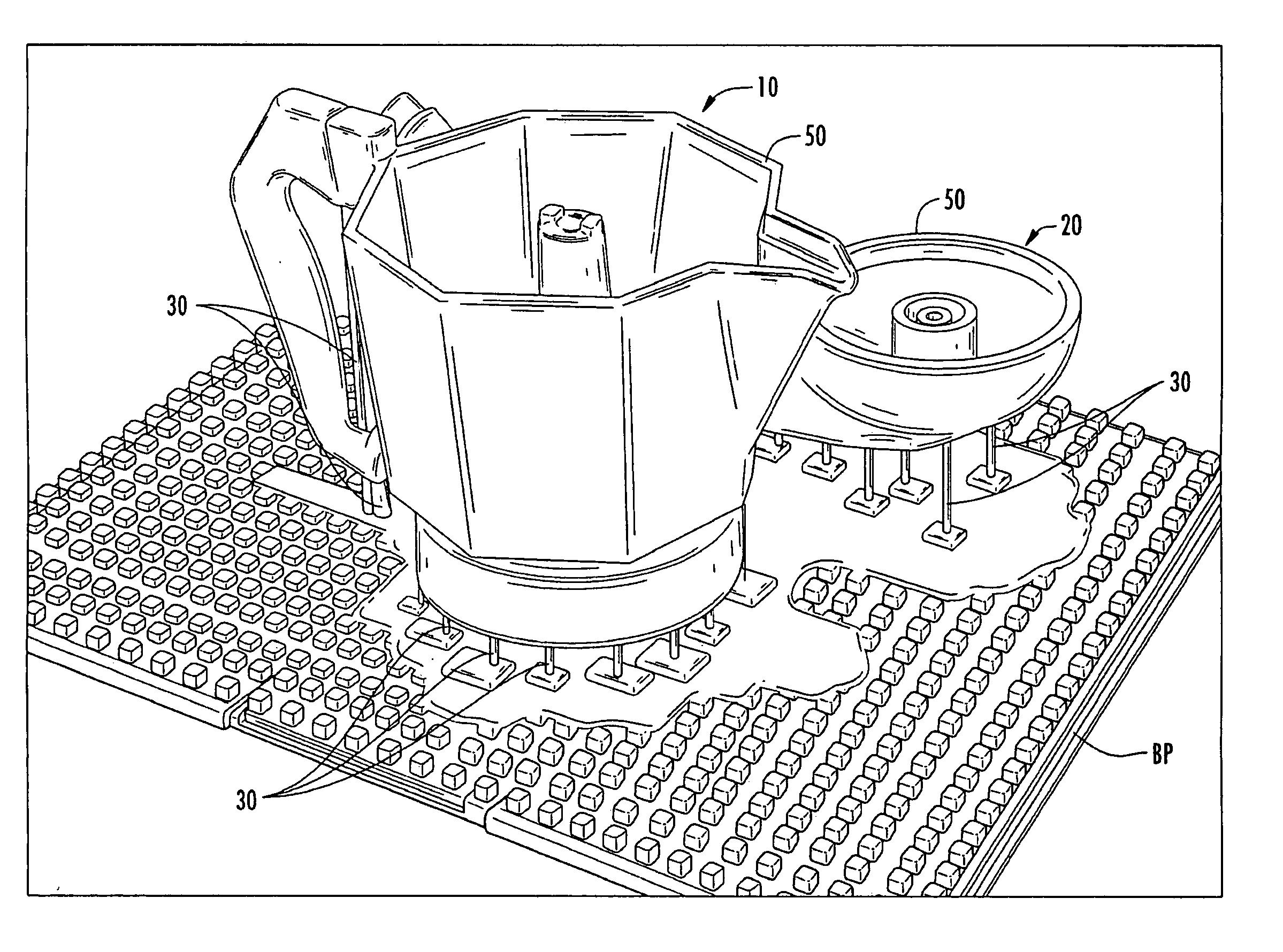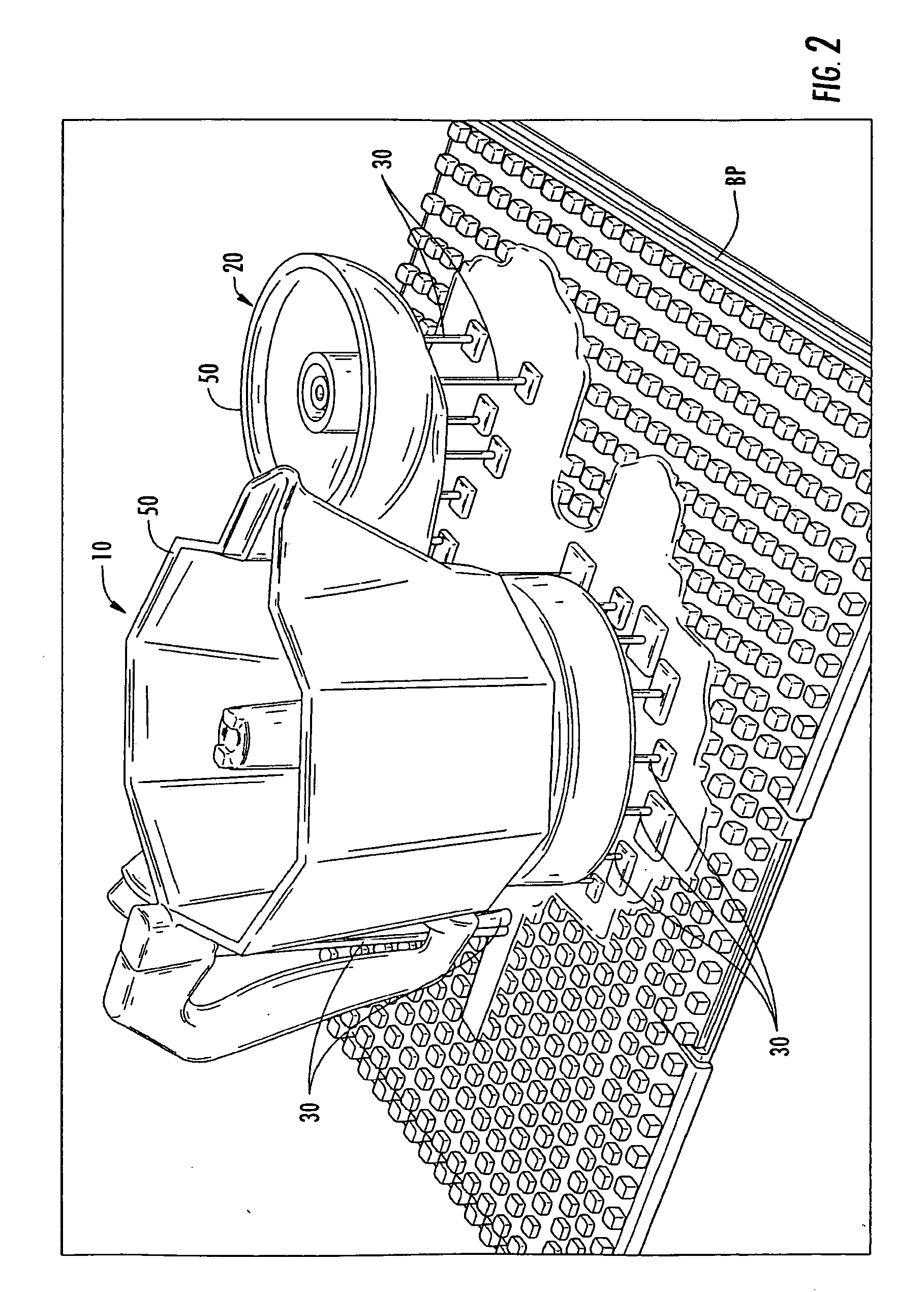Region-Based Supports for Parts Produced by Solid Freeform Fabrication
a technology of region-based support and freeform fabrication, which is applied in the direction of electrical programme control, instruments, and programming control, etc., can solve the problems of limited number of parts produced in rapid manufacturing methods, shortening the time to develop prototype parts, and insufficient prior art support. , to achieve the effect of high removal for
- Summary
- Abstract
- Description
- Claims
- Application Information
AI Technical Summary
Benefits of technology
Problems solved by technology
Method used
Image
Examples
example embodiments
[0070]Example embodiments of the support generation method of the present invention for generating support structures are now described.
[0071]FIG. 1 is a schematic diagram of two objects—namely, a teapot base 10 and a showerhead 20—as presented using “Print Preview” Software graphics and shown residing on a build pad BP. Although a disposable build pad BP with raised surface features is disclosed herein, it should be appreciated that any build platform or other surface adapted to support the build or part, regardless of the size, shape, surface texture, reuseability, or other parameters of the build pad, may be used in conjunction with the present invention. It should also be appreciated that parts of various sizes and shapes may be created and supported using the present invention. Turning again to FIG. 1, larger columnar support structures (“supports”) 30 are indicated as squares and smaller supports are indicated by circles. The teapot base 10 has an outer ring region 12 supporte...
PUM
| Property | Measurement | Unit |
|---|---|---|
| Fraction | aaaaa | aaaaa |
| Fraction | aaaaa | aaaaa |
| Fraction | aaaaa | aaaaa |
Abstract
Description
Claims
Application Information
 Login to View More
Login to View More - R&D
- Intellectual Property
- Life Sciences
- Materials
- Tech Scout
- Unparalleled Data Quality
- Higher Quality Content
- 60% Fewer Hallucinations
Browse by: Latest US Patents, China's latest patents, Technical Efficacy Thesaurus, Application Domain, Technology Topic, Popular Technical Reports.
© 2025 PatSnap. All rights reserved.Legal|Privacy policy|Modern Slavery Act Transparency Statement|Sitemap|About US| Contact US: help@patsnap.com



